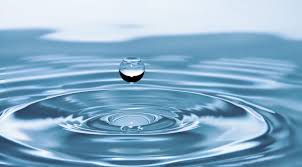It’s critical to drink enough water each day for your health. By staying hydrated, you can avoid being dehydrated, a condition that can impair your memory, alter your mood, cause your body to overheat, and result in constipation and kidney stones. When used in place of calorie-containing beverages like sweet tea or ordinary soda, water can assist with weight management and calorie restriction.
How is Drinking Water Produced?
Both groundwater and surface water are the natural sources of your drinking water. Rain and snow sink into the ground, where they become groundwater. The water is retained in pores and open spaces as well as in aquifers, which are layers of sand and gravel. We draw this groundwater from wells or springs. Rain and snow are other sources of surface water. The rivers, lakes, and streams are filled with water. Pipes or tanks are filled with water that is pumped into them from surface or groundwater sources. Our houses, workplaces, schools, and other locations where you may turn on the tap and get water to drink are all connected to the pipes.
More so, any natural resource, including groundwater, surface waters like lakes and rivers, and seas, can be used to create drinking water. Standards for drinking water are determined by the European Union or the World Health Organization. Drinking water must be clear of bacteria, harmful compounds, and suspended particulates. Although the recommended mineral concentrations vary from country to country, most minerals have a maximum concentration that should be followed to guarantee that drinking water is safe, balanced, and enjoyable.
How to Produce Alkaline Drinking Water?
The pH of water is typically 7.0, which means it is neutral and neither alkaline nor acidic. Alkaline is defined as a value above 7.0. How efficiently water can balance acids can be determined by how alkaline it is. Some individuals believe that the alkalinity—or lack thereof—of water may have a substantial impact on your health, despite the fact that there is little scientific evidence to support this.
Drinking water free of toxins is another way to preserve the health of your body in addition to the daily effort you put into sleeping and rejuvenating it, according to the Mayo Clinic team, and they advise that any water you consume initially be as devoid of pollutants as possible, regardless of pH.
To increase the alkalinity of your water, choose any of the following additives:
1. Fresh lemons: The alkalinity of your cleaned water will eventually rise if you add fresh lemon to it. The idea that adding a lemon to your purified drinking water can ultimately produce an alkaline result may seem nonsensical, but it’s important to remember that fresh lemons are also anionic. When you consume acidic lemon water, your body’s digestion of the anions in the lemons causes the water to become alkaline. Use fresh lemons that haven’t been exposed to air for more than 30 minutes as opposed to lemon juice from the store or lemons that have been sliced up and left out in the open all day.
2. Baking soda: By simply mix a gallon of clean water with half a teaspoon of baking soda quickly to ensure complete dissolution. When added to filtered water, a small amount of baking soda, which has a high alkaline content, can create one gallon of alkaline water.
3. Drops: Another option to increase the alkalinity of your cleansed water is to add drops created specifically for this purpose to it. There are many over-the-counter drops that may be purchased in health food stores or online. Refer to the instructions on the bottle to determine the proper dosage to produce the desired result. Alkaline water helps to balance the acid in your body, and it can enhance general health and performance when combined with good habits like regular exercise and stress-relieving activities like hot yoga or Pilates.
Best Way To Treat Produced Water For Drinking Water
Various water treatment technologies are employed in public drinking water systems to provide clean drinking water to communities. Coagulation, filtration, flocculation, sedimentation, and disinfection are common and typical water treatment processes used in public water systems.
Step 1: Agglomeration. Agglomeration is often used as the first step in water treatment. During coagulation, positively charged substances are introduced into the water. The positive charge counteracts the negative charge of dirt and some other dissolved particles in the water. Chemicals and particles combine to form slightly larger particles. Common ingredients at this stage include certain salts, aluminum, or iron.
Step 2: Flocculation. The technique of flocculation involves gently mixing water to produce larger, heavier particles known as flocs. Water treatment facilities frequently add additional chemicals during this stage to help with floc production.
Step 3: Sedimentation. Sedimentation is one of the methods used in water treatment plants to remove particles from water. During sedimentation, the flakes are heavier than the water, so they sink to the bottom of the water.
Step 4: Filtration. The water is filtered to remove any remaining solids once the flocs have settled to the tank’s bottom. Clean water is passed through filters composed of various materials and having variable pore sizes during the filtration process (such as gravel, sand, and charcoal). These filters eliminate dust, chemicals, bacteria, viruses, parasites, and other dissolved contaminants. Filters made of activated carbon are also excellent at eliminating unpleasant scents. In addition to or instead of standard filtration, water treatment plants may use a technology known as ultrafiltration. The flow of water via a membrane with incredibly small holes is known as ultrafiltration. This filter only allows water and other tiny molecules to pass through it (such as salts and tiny, charged molecules).
Step 5: Disinfection. Right after the water has been filtered, water treatment facilities may add one or more stterilizing agents or chemical disinfectants (such as chloramine, chlorine, or chlorine dioxide) to get rid of any remaining bacteria, parasites, or viruses. In order to help keep water safe as it travels to your homes and businesses, water treatment plants make sure the water has low quantities of chemical disinfection before it leaves the facility. Bacteria that are present in the pipes that connect the water treatment facility to your tap are removed by the disinfectant that is still there.
Is water from a dehumidifier drinkable?
Dehumidifiers draw warm air from a space with a fan, remove the moisture from that air, and then return the cooler, drier air to the space. A dehumidifier absorbs and holds moisture in a container when it pulls warm air in to eliminate moisture molecules. The machine will eventually build up a significant amount of water.
Putting a full bucket of water down the drain after your dehumidifier has emptied itself may seem like a waste. Since a dehumidifier only draws water from the air, you would assume that the water it gathers is just as pure as rainwater. Unfortunately, it’s not exactly that easy.
To put emphasis, water from a dehumidifier should not be consumed. Heavy metals from the dehumidifier’s coils are also present in the water, which grows mold and mildew and is impossible to remove even by boiling. Stagnant condensate offers a favorable habitat for the development of biological pollutants such as algae, mildew, and mold. In addition, the water from a humidifier could contain dehumidifier metal residues and poisons like lead.
Drinking is dangerous since it exposes people to health hazards and including pollutants. Condensate water isn’t sanitized by boiling like distilled water is.
It might be challenging to see what appears to be sparkling-clean water draining away. It’s typically recommended to avoid swallowing the water in your dehumidifier tank, even though it could seem like the ideal additional source of fresh drinking water. However, even if it cannot be drunk, this water can always be used in various ways around the house. As a result, it need not be wasted.
Desalination Methods For Producing Drinking Water
Here are the two primary categories of desalination technologies: thermal (MED, MVC, and MSF) and membrane (RO).
1. Reverse osmosis (RO) desalination removes salt and other pollutants by passing water through a number of semi-permeable membranes using the osmosis principle.
2. Thermal desalination purifies water by evaporating and condensing it using heat, frequently leftover heat from power plants or refineries. Water is processed in the most cutting-edge desalination plants, like those constructed by IDE, to increase plant effectiveness.
Final Thoughts!
Indeed, water is one of the essential necessities of human beings. It helps boost energy, delivers vital nutrients to all of our cells, especially muscle cells, postpones muscle fatigue, helps weight loss, aids in digestion, helps hydrate skin, and the like.
In order to make the water suitable for the intended end use, water treatment involves removing pollutants and unwanted components or reducing their concentration. Human health depends on this procedure, which also enables drinking and irrigation use benefits.
If you are seeking a Thai company that can create drinking water and mineral water of high quality and with excellent customer service for your brand, offers product design services, and accept orders for little or large quantities of drinking water, you may immediately visit the website https://packsbeverages.com/. Take advantage of their great deals and inexpensive items as compared to regular water, but they may be customized to create your own mineral water to boost the value of your business.
Also Read: Benefits of Drinking Water in the Morning


